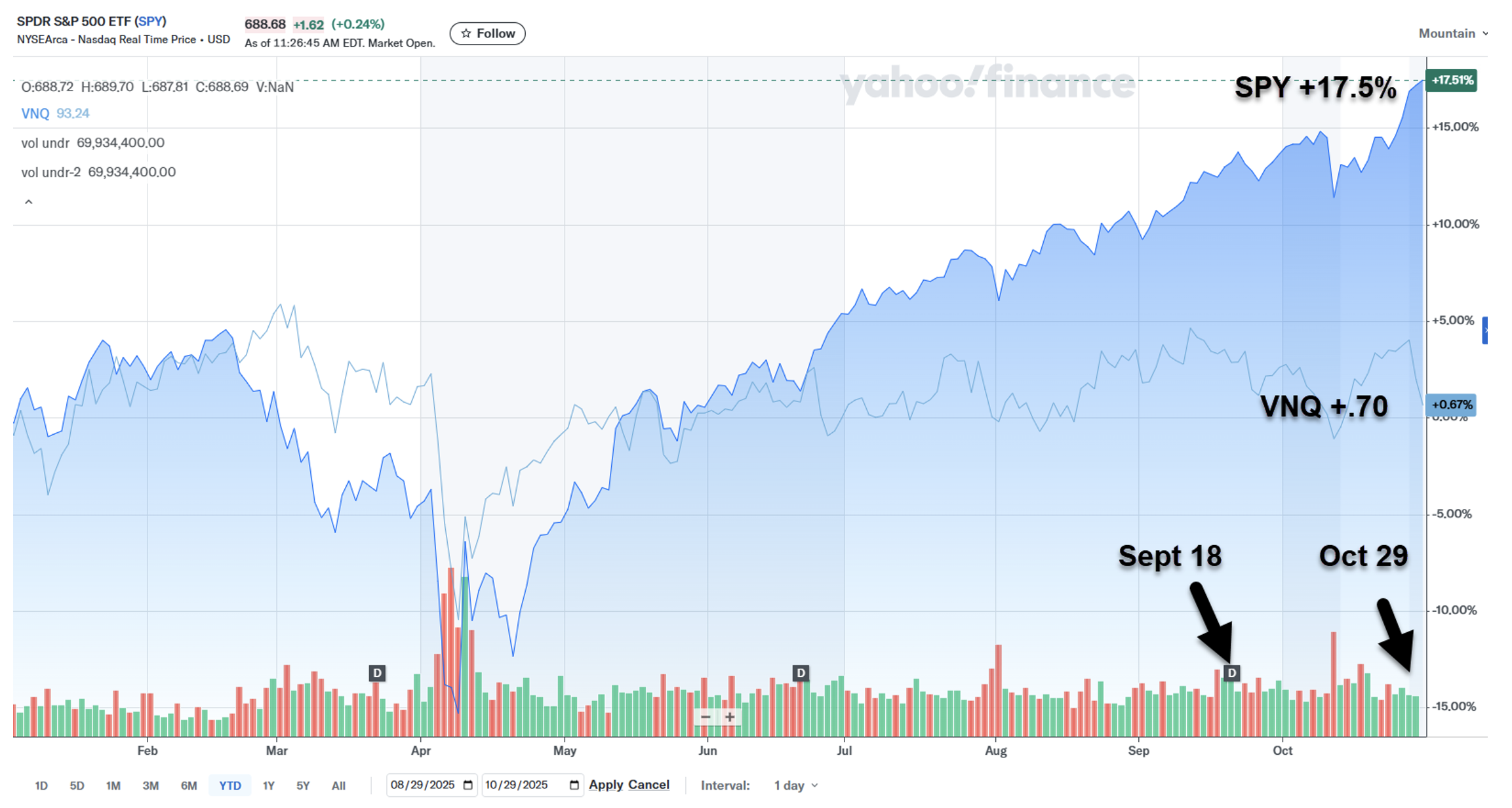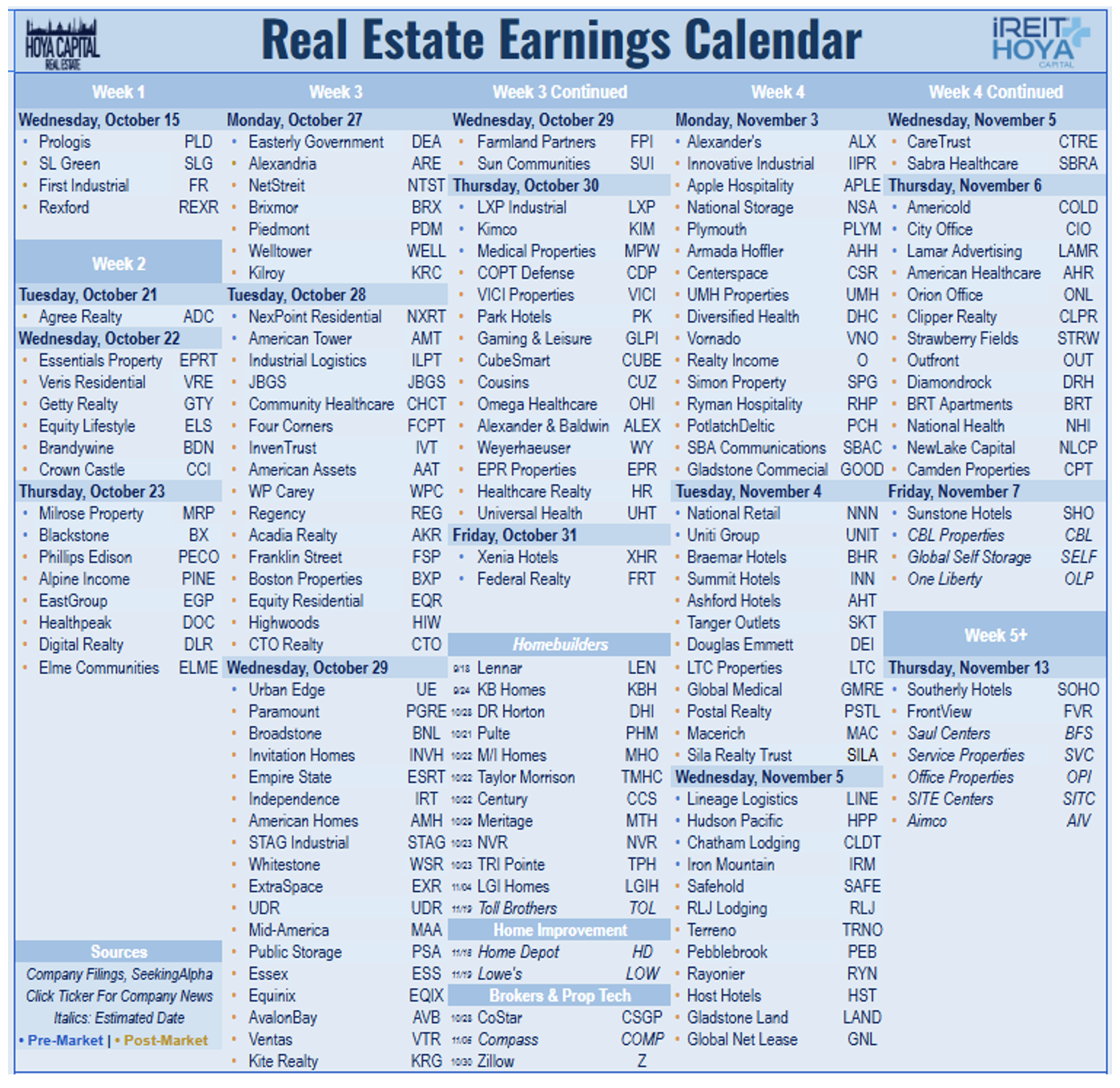You don’t see this every day…
Source: The Wall Street Journal
That’s a picture of the homepage of The Wall Street Journal yesterday afternoon. On the right, WSJ dutifully tells us that Nvidia (NVDA) just surged past a $5 trillion market capitalization, the first public company to do so. Other AI-related stocks like Broadcom (AVGO), Advanced Micro Devices (AMD), and Micron Technology (MU) have also powered higher in recent months.
And on the exact same day, the paper runs a story about a new wave of white-collar layoffs.
Could one story have something to do with the other?
The WSJ‘s coverage about the troubles in the job market isn’t wrong. The labor market is looming over everything like a giant specter waiting to eat who it may. The hiring rate, or number of new jobs added as a percentage of total employment, is at the lowest level it has been in 15 years.
To put it into further perspective, the rate of monthly job creation last summer averaged 89,000. This past summer, it fell to just 29,000.
We haven’t seen numbers this bad since 2010 after the Great Recession hit. And it’s hard not to get at least a little scared when you see such a decline.
The Federal Reserve, for its part, felt that conditions in the labor market were bad enough to warrant another quarter-point cut, which Jay Powell announced yesterday.
Economists and average Joes alike have been wondering for years now when the next recession will hit. But these numbers make me think we’re already in one, just in a jobs-specific way.
The U.S. Jobs Situation Isn’t Pretty… (But)
Outside of certain markets like my hometown areas of Greenville and Spartanburg, South Carolina – the subject of a future article – the U.S. is experiencing only modest hiring and a growing number of job cuts.
Take Amazon (AMZN), which announced plans this week to lay off 30,000 corporate employees in the days and months ahead. The tech giant says it wants to slim down and conserve cash. But really, it could be because AI is able to fill more roles than ever before.
Regardless of the reason, this culling will amount to around 10% of Amazon’s workforce – its largest reduction since 2022, when it eliminated around 27,000 positions.
Last month, Starbucks (SBUX) announced its own corporate cuts: 900 across the U.S. and Canada. Plus, it will be closing about 1% of its stores.
We also have to remember how many businesses avoided hiring over the summer months as they awaited clarity on Trump’s trade policy. They do seem to be growing more confident now, with private payroll processor ADP reporting Tuesday that employment increased a weekly average of 14,250 in the four-week stretch ending October 11. So that’s a clear positive.
However, it’s still in the face of:
-
The federal government shedding over 200,000 jobs this year due to efficiency efforts.
-
The ongoing government shutdown, which has left around 1.4 million federal employees on unpaid leave or working without pay. And who knows how much longer that’s going to last.
That’s why the Fed’s decision to lower interest rates by another quarter point yesterday is so welcome. It’s now down to between 3.75% and 4%, which should help lower financing costs on business loans, credit-card debt, car loans, and home equity lines of credit.
And that should spur greater economic spending, which will create more jobs.
It will take time to do so. We might not see truly brighter days until this year is over. But it will happen nonetheless.
In the meantime, while we wait for a healthier America to manifest itself, there are many real estate investment trusts (“REITs”) that should benefit much more quickly.
These REITs Love Rate Cuts
While the SPDR S&P 500 Fund (SPY) has soared 17.5% year to date, hitting new highs in the process… shares of REITs have lagged, up a mere 0.7% so far.
Source: Yahoo Finance
Yet as REITs report their third-quarter results, the consensus so far is that demand outstrips supply (in most property sectors), giving them plenty of opportunity to grow. That’s why, even in the middle of this dreary season of lackluster investor reception, I’m very much bullish.
For example, REITs such as Agree Realty (ADC), Digital Realty (DLR), and Prologis (PLD) all increased their future outlook in recent weeks.
Net-lease operator Agree, for its part, raised its adjusted funds from operations per share projections to between $4.31 and $4.33. That would be 4.4% year-over-year growth. And it also boosted acquisition volume expectations to between $1.5 billion and $1.65 billion.
Data-center giant Digital Realty, meanwhile – which had previously expected 7.1% full-year funds from operations (“FFO”) growth – now says it should hit 9.4%. For the quarter, it recorded impressive 8% leasing spreads, up from an already noteworthy 7.3% in the second quarter.
Then there’s warehouse provider Prologis, which raised its core FFO guidance to between $5.78 and $5.81, a 4.4% growth rate from 2024. Also, quarterly occupancy rose to 95.3%, a 20 basis-point increase.
Now, one REIT that reported negative expectations so far is life-science landlord Alexandria Real Estate (ARE). It not only missed earnings by $0.09, but it revised its 2026 guidance from between $9.16 and $9.36 to between $8.98 and $9.04.
The company bases these projections on a 100 basis-point reduction in generally accepted accounting principles same-store net operating income, amounting to a 3.7% contraction.
I plan to put together a deep-dive research report this weekend on Alexandria, which I’ll publish next week. And I’ll be discussing the larger life-science sector with fellow Wide Moat Research analyst Nick Ward next week at The Wide Moat Show on YouTube.
It’s not all scary out there, but I want you to be as well-informed as possible. So make sure not to miss these upcoming analyses!
Source: iREIT® + HOYA
REIT Tricks and Treats
Overall, the REIT earnings season appears to be in good shape. And I suspect, now that interest rates have dropped again, we’ll see even more guidance increases as the quarterly reports continue.
With a possible recession looming, we’re less excited with the softer lodging sector, which generally underperforms in downturns. And weaker retail landlords with properties in less affluent markets will likely take a hit as well.
Also, I’m watching the apartment sector closely, where several REITs have already lowered expectations due to weakening rents. I still expect these apartment landlords to improve based on the demand outlook in 2026 and improved cost of capital. However, I’m very well aware there are outliers here we want to stay away from.
Overall, I would focus on REITs that generate superior growth, and sectors like data centers and industrial warehouses that benefit from the AI boom. I also like the more dominant net-lease REITs like Realty Income (O), Agree Realty, and VICI Properties (VIC).
REIT investing shouldn’t be that scary, even when interest rates are high and especially if you pay close attention to fundamentals. That’s the topic of today’s Wide Moat Show, which you can click right here to access.
You might be surprised at some of the scariest REITs and sweetest REIT treats we’ve found.
Regards,
Brad Thomas
Editor, Wide Moat Daily
|



